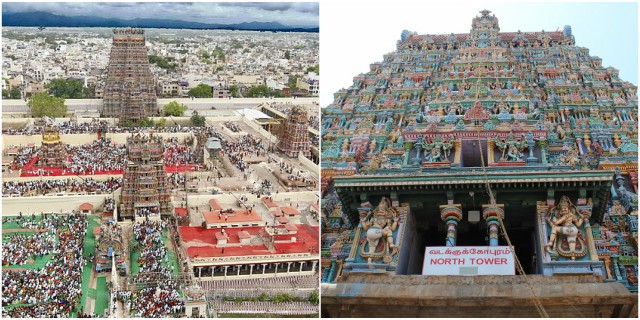Located on the southern bank of river Vaigai in the temple city of Madurai, India, the Meenakshi Amman Temple is one of the biggest temples in Asia and is a significant symbol for the Tamil people.
It has been mentioned since antiquity in Tamil literature and holds enormous cultural and religious significance. The entire temple occupies around 45 acres, with each side having an entrance of its own.

The Meenakshi Amman Temple dates back to the 6th century BC, when it was originally built by survivors of the Kumari Kandam. It is dedicated to Sundareswar (a form of Lord Shiva) and Meenakshi (a form of Goddess Parvati). The principal deity of the temple is the goddess Meenakshi, not Sundareswarar, unlike most Shiva temples in South India where Shiva is the principal deity.
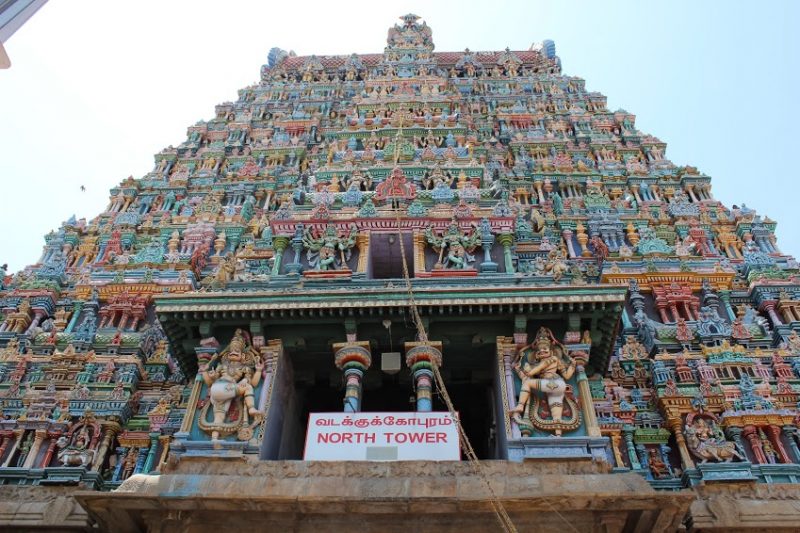
The temple was rebuilt by the Nayak ruler Vishwanatha Nayakar around the 16th century after it was razed to the ground by the invading armies of Malik Kafur, the general of Allauddin Khilji of the Khilji dynasty of Delhi, in early 14th century.
The temple complex comprises 14 magnificent Gopurams or towers, including two golden Gopurams for the main deities, which are richly sculptured and decorated. These represent the animals, demons, and gods of Hindu tradition and are designed to create the maximum visual impact, both from near and afar.
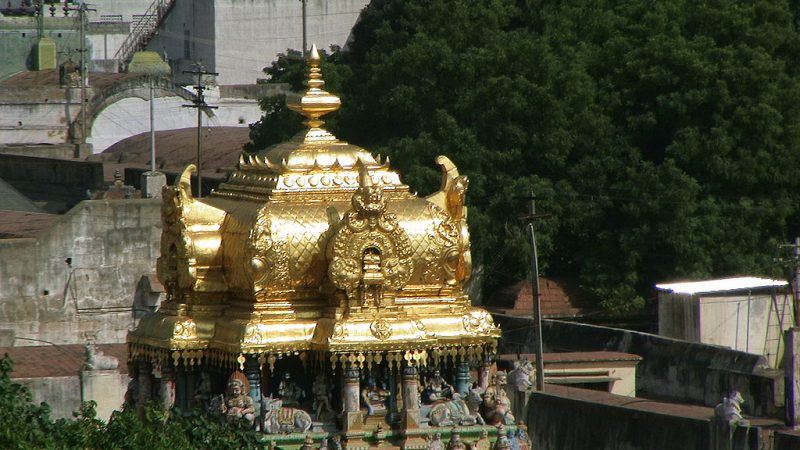
The oldest gopuram is the eastern one, built by Maravarman Sundara Pandyan between 1216 and 1238, and the tallest is the southern gopuram, which rises 51.9 meters high and can be climbed to offer a view of the entire city.
Within the temple complex, there is a large tank of water. Tamil legends say that the lake used to evaluate the works of writers in olden times, as writers used to bring their works and throw them in the lake. The poorly written works were supposed to sink and the scholastic ones were supposed to float.
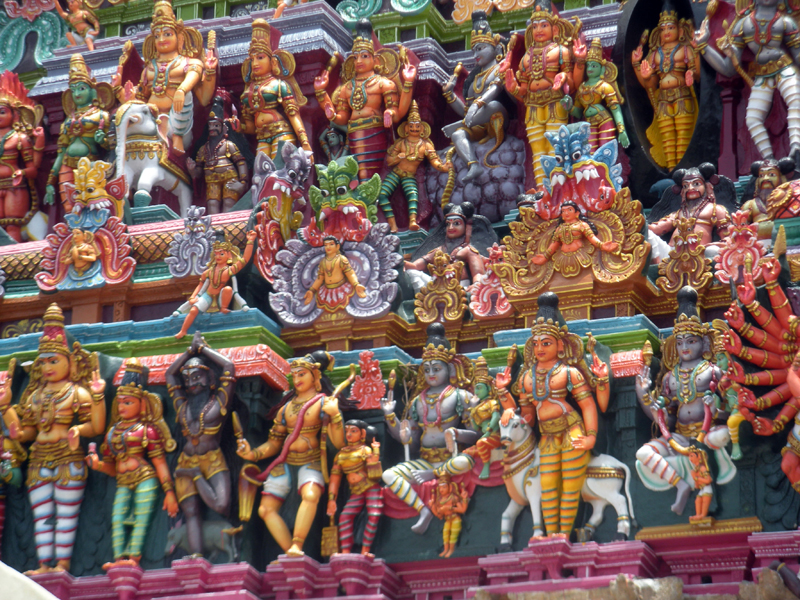
The thousand pillared hall within the temple complex is also of great importance. It is an architectural wonder with two rows of richly carved pillars, containing images of a legendary beast with an elephant’s head and a lion’s body known as Yali.
The thousand pillared hall was built by Ariyanatha Mudaliar in 1569. Each pillar is sculptured and is a monument of Dravidian sculpture. They also produce a musical note when struck. Actually, the number of pillars is only 985 (instead of 1000 as is commonly believed).
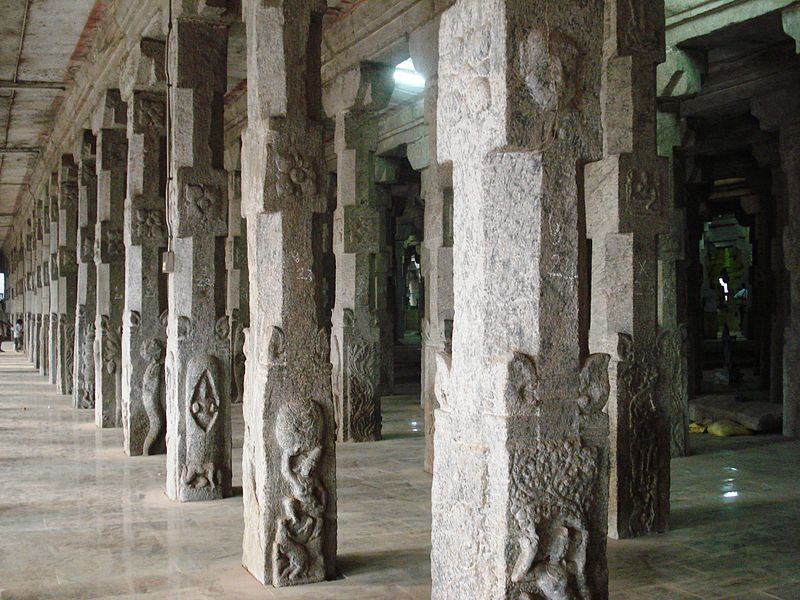
The “Meenakshi Thirukalyanam,” or the marriage of Goddess Meenakshi, is the most important festival celebrated in this temple. The annual 10-day Meenakshi Tirukalyanam festival is celebrated during April and May and attracts more than one million domestic and foreign tourists.
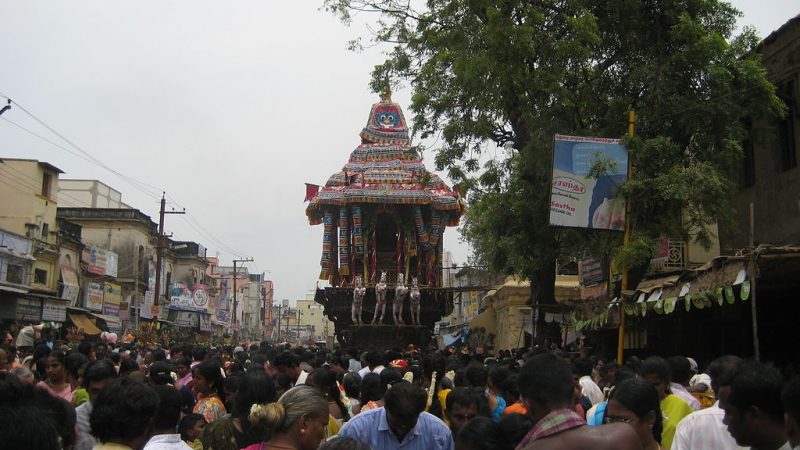
About 15,000 people visit the temple every day and around 25,000 on Fridays. With an estimated 33,000 sculptures the Meenakshi Amman Temple was on the list of the top 30 nominees for the “New Seven Wonders of the World”.
